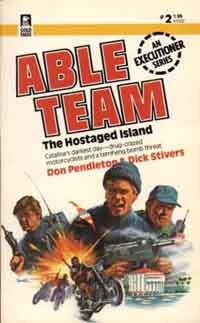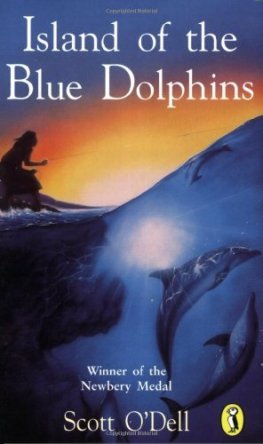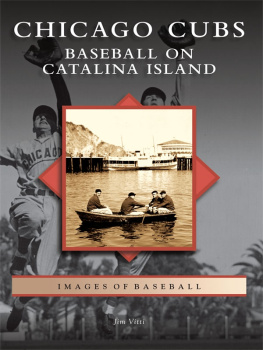Table of Contents
Santa Catalina Island, California USA
Tour Guide
Author
Leon Shaw
SONITTEC PUBLISHING
All rights reserved. No part of this publication may be reproduced, distributed, or transmitted in any form or by any means, including photocopying, recording, or other electronic or mechanical methods, without the prior written permission of the publisher, except in the case of brief quotations embodied in critical reviews and certain other noncommercial uses permitted by copyright law. For permission requests, write to the publisher, addressed Attention: Permissions Coordinator, at the address below.
Copyright 2019 Sonittec Publishing
All Rights Reserved
First Printed: 2019.
Publisher
SONITTEC
College House, 2nd Floor
17 King Edwards Road
Ruislip, London
HA4 7AE.
Summary
Why Travel and Tourism Is More Important Now Than Ever
I believe that travel expands our minds, broadens our perspectives, and teaches us tolerance to cultures and mentalities that are different from our own. More importantly, travel opens our hearts and makes us more humane and compassionate towards others.
When we travel especially across borders we see that people are fundamentally the same, despite differences in culture, religion or belief. No matter what happens between countries and governments, people are people. We are all searching for the same things: a better life, a better future for their children and more purpose.
Finding Positivity and Hope
Amidst all the negativity surrounding the world these days, we need to find more positivity and hope in our lives. And travel lets you do just that. Travel spreads love and shows us the goodness in people.
Ive lost count of the number of encounters Ive had with people who have touched my heart. Because of this, the importance of travel to me has always been incredibly clear.
Like that time when I lost my wallet in Tirana, Albania and a young man helped me out by lending me some money and making sure I got home safely.
Or the other time when I couldnt find my way out of the maze-like old town of Yadz in Iran, and a middle-aged man kindly gave me a free lift and even invited me to have tea with his wife in their home. And another time when I fell sick while biking around Bagan, Myanmar, and a kind lady who was selling drinks on the streets ushered me straight into her stall and nursed me for hours.
Albania, Iran and Myanmar are all places that many consider dangerous, and yet the people I met there are some of the kindest souls. What we read on the news are just that the news while individual stories are what we really need to hear, and yet they remain untold.
I cannot stress how different the stories on the ground can be to what we see on TV or in the newspapers. I recently traveled to Brussels and Istanbul just a few months after the terrorist attacks. And as I expected, everything actually had returned to normal, besides the few additional security measures. Once again, it goes to show that reality is different from what the media feeds us. So get out there and see for yourself. The world really isnt such a scary place.
The importance of travel is still great
In times of distress like these, we need travel.
We need more love and positivity in this world. We need to unite and stay together, because we are always more powerful as a unit. Theres a need for us to choose good over evil. We need to believe in others and see the beauty in people and the world once again.
If we stop traveling, we stop flourishing. We stop accepting people who are different to us and we stop connecting with the world. Lets break down borders and build bridges that connect all of us because together, we can fight fear by traveling.
Introduction
After an unhealthy dose of the mainlands soupy smog and freeway gridlock, youll appreciate an excursion to Santa Catalina Island, with its clean air, crystal clear water, and the blissful absence of traffic. In fact, there isnt a single traffic light on the Island of Romance. Conditions like these can fool you into thinking that youre miles away from the hustle and bustle of the city, but the reality is that youre only 22 miles off the Southern California coast and still in L.A. County, at least on paper.
Because of its relative isolation, out-of-state tourists tend to ignore Santa Catalina which everyone calls simply Catalina but those who do make the crossing have plenty of elbow room to boat, fish, swim, scuba, and snorkel. There are also miles of hiking and biking trails, plus golf and tennis, zip lines and ropes courses, and at night, seafood and barhopping.
Catalina is so different from the mainland that it almost seems like a different country, remote and unspoiled. In 1919 the island was purchased by William Wrigley, Jr., the chewing-gum magnate, who successfully developed it into a fashionable pleasure resort. To publicize the new vacationland, Wrigley brought big-name bands to the Avalon Ballroom and moved the Chicago Cubs, which he owned, to the island for spring training. Catalina soon became a world-renowned playground, luring such celebrities as Laurel and Hardy, Cecil B. DeMille, John Wayne, Errol Flynn, Charlie Chaplin, and even Winston Churchill.
In 1975, the Santa Catalina Island Conservancy, a nonprofit operating foundation organized to preserve and protect the islands nature habitat, acquired about 88% of Catalina Island, protecting virtually all of the hilly acreage and rugged coastline that make up what is known as the interior. In fact, some of the most spectacular areas can be reached only by arranged tour.
History of Catalina Island
Santa Catalina Island has a long and storied history. There have been inhabitants on the island for the past 7,000 years. The first Europeans to arrive claimed the island for the Spanish Empire. It was later turned over to Mexico and then to the United States. The island has served as a stop for smugglers, gold diggers, pirates, hunters, the Union army and missionaries. Catalinas history as a resort destination began about 125 years ago.
A Series Of Owners
By 1864, after a series of owners, Catalina was entirely owned by James Lick, who was once considered the wealthiest man in California. After a few failed attempts at a resort development, Catalina was sold to the sons of Phineas Banning in 1891. The Banning Brothers established the Santa Catalina Island Company to develop the island as a resort, developing the city of Avalon and building roads into the islands rugged interior.
The Banning Years
The Banning brothers built hunting lodges, like the Banning House Lodge, and ran stagecoach tours around the island. They created access to Avalons beach areas, like Lovers Cove, Casino Point and Descanso Beach. In 1909, they built the green pleasure pier, which still stands today.
All was going well until 1915, when a fire burned down half of Avalons buildings. The fire, along with the hard times and restrictions of World War I, forced the brothers to sell the island in 1919.
The Wrigley Vision
In 1919, chewing gun entrepreneur William Wrigley Jr. bought nearly every share of the Santa Catalina Island Company until he owned a controlling interest. Wrigley invested millions in the island, building infrastructure and attractions.
To bring attention and tourists to the Island, he made Avalon the Spring Training home of the Chicago Cubs, which he also owned. Wrigley built the Catalina Country Club to house the teams lockers and provide a gathering place for players.The team continued to train on the island until 1951.
In 1929, Wrigley built the iconic Catalina Casino, which boasts the worlds largest circular ballroom. His son Philip Wrigley took over and continued his fathers vision after his passing in 1932. During World War II, the island served as a military training facility and was closed to tourists.









